Chugoku
Hiroshima
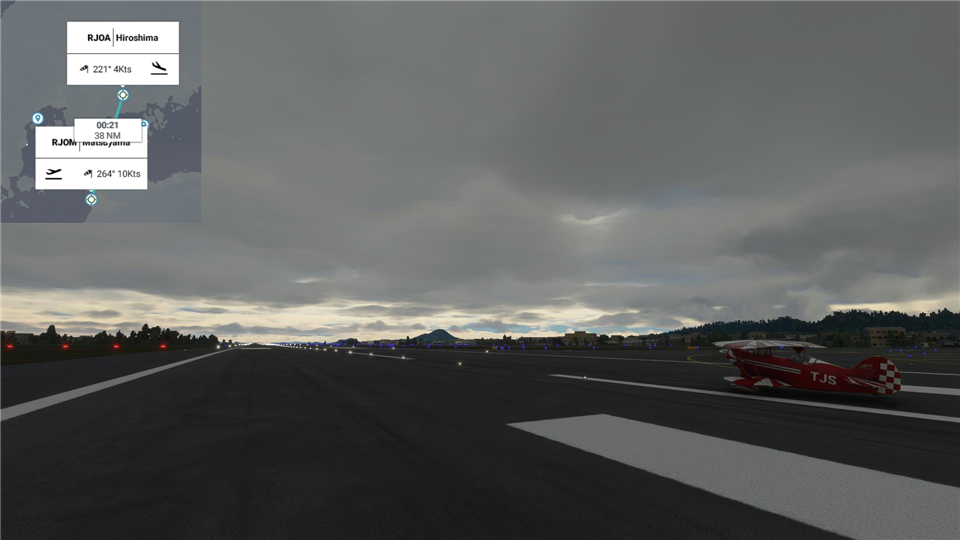
A pretty short flight this morning. Just going to hop over the Seto Sea to the town of Hiroshima. While the distinctive Jomon pottery found in the area indicates that it has been inhabited since the last glaciation, the town itself was totally destroyed on August 6th 1945 and subsequently rebuilt.
This is the Seto Inland Sea. Famous for its red tides.
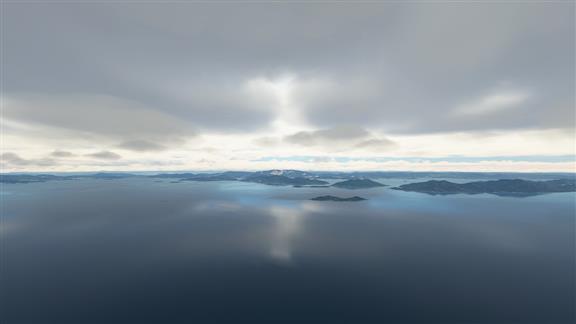 |
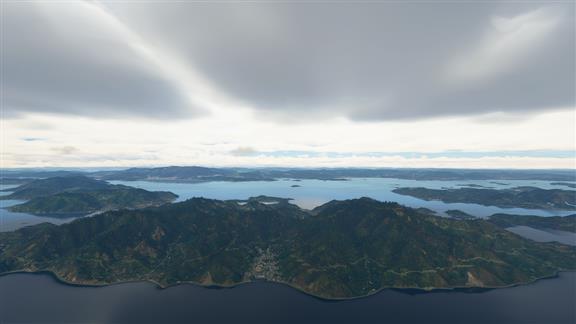 |
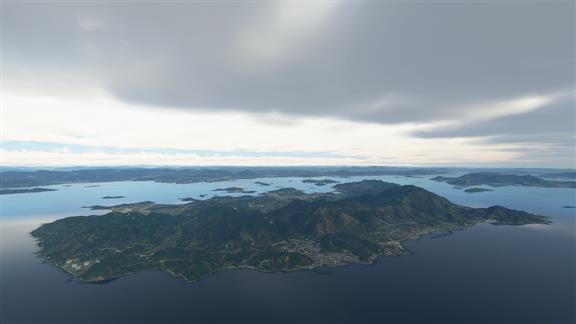 Osaki Kamizima, one of the Osaki islands. Sometimes spelled "zima" and sometimes spelled "jima", and I can't figure out why. Anyhow, the slow island life doesn't appeal to the young people any more so the islands are dying. Especially since the anti-prostitution laws of 1956. One of the islands in this group used to be especially well known for its hospitality.
Osaki Kamizima, one of the Osaki islands. Sometimes spelled "zima" and sometimes spelled "jima", and I can't figure out why. Anyhow, the slow island life doesn't appeal to the young people any more so the islands are dying. Especially since the anti-prostitution laws of 1956. One of the islands in this group used to be especially well known for its hospitality.Just while we're here, one of the little dots in the far background is Okunoshima - Rabbit Island. |
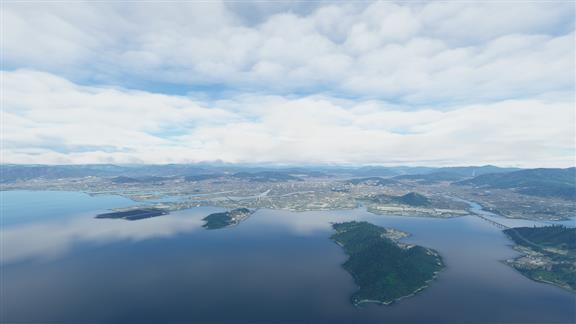 Which gets us to our goal, Hiroshima. No discussion of Hiroshima would be complete without a lengthy discourse on the Atomic Bomb attack of 1945, so I plan to be very incomplete.
Which gets us to our goal, Hiroshima. No discussion of Hiroshima would be complete without a lengthy discourse on the Atomic Bomb attack of 1945, so I plan to be very incomplete.Hiroshima started out, in recorded history at least, as a small fishing village on the shores of Hiroshima Bay. It has figured in a lot of military history. A castle was built here in the latter part of the 16th century by Mori Terumoto, who supported the bad guys in the Battle of Sekigahara. So the good guys gave most of Hiroshima including the castle to people with a clearer sense of the direction Japan was heading. During the first war with China over Korea, Hiroshima became the seat of government for a bit and the Emperor moved into the castle. Later, during the first of many spats with Russia, Hiroshima found itself key in the production of war materiel. In the first world war, which Japan fought on the side of the Allies, the little island of Ninoshima (just behind us unfortunately) was used to hold 500 German POWs. In the second world war Japan was not on the side of the Allies. They housed the imperial forces responsible for the defence of mainland Japan right here in the castle, and we know how that worked out. The entire town, castle, and everyone and everything in either, all disappeared on August 6th 1945. Except for one building which survived because it was directly under the explosion, and three trees that inexplicably survived the destruction of the castle and its grounds. Everything you see in Hiroshima is no older than the 1950s. |
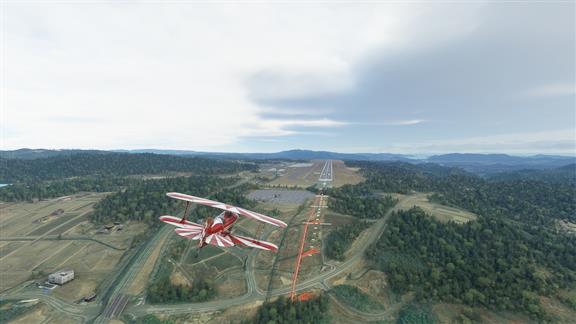 So that's our Hiroshima adventure. We'll follow it in three days time with a trip to Nagasaki.
So that's our Hiroshima adventure. We'll follow it in three days time with a trip to Nagasaki.
|